Price’s Second Dakar Win?
Last week, Transmoto’s Grant “GOBA” O’Brien spoke exclusively with 2016 Dakar Rally winner, Toby Price, about his recent testing of KTM’s all-new Red Bull Factory 450 Rally machine in Morocco, and the extent of the injury he sustained to his leg during that test session. As much as we’d love to think the big Aussie larrikin will be fit enough to line up in January for the 2018 Dakar Rally, we’re not alone in having serious doubts. In any case, what better time to reflect on Price’s momentous achievement in 2016, when he became Australia’s first ever Dakar Rally winner.
This fascinating interview with Toby Price – along with the iconic shot of the man proudly displaying the Dakar trophy in front of Sydney’s Harbour Bridge – was first published in the March-April 2016 (Issue #55) of Transmoto Magazine.
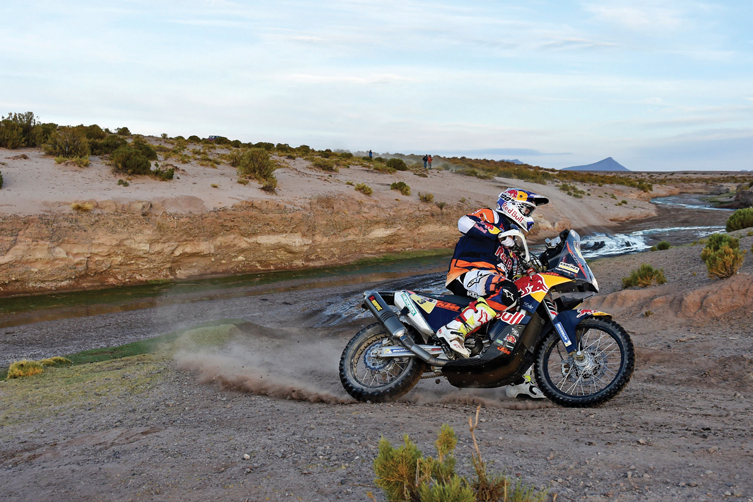
A month on from becoming Australia’s first ever Dakar Rally winner, Toby Price reflects on his historic achievement, and airs his aspirations for a decade of desert dominance.
Competing in just his sixth rally event, Toby Price shocked everybody by winning the most coveted off-road endurance race on the planet. In doing so, he became Australia’s first ever Dakar champion. And in his humble, knockabout, personable manner, he made us all feel like we were riding every step of the way with him through South America for those two gruelling weeks in January.
Now that Price has had a month to reflect on the achievement, we shared a few beers with the 28-year-old aboard a sponsor’s boat on Sydney Harbour, where he offered this candid insight into his Dakar odyssey’s highs and lows, the media maelstrom that’s engulfed him since, and his intentions to help use the exposure for the sport’s greater good in Australia.
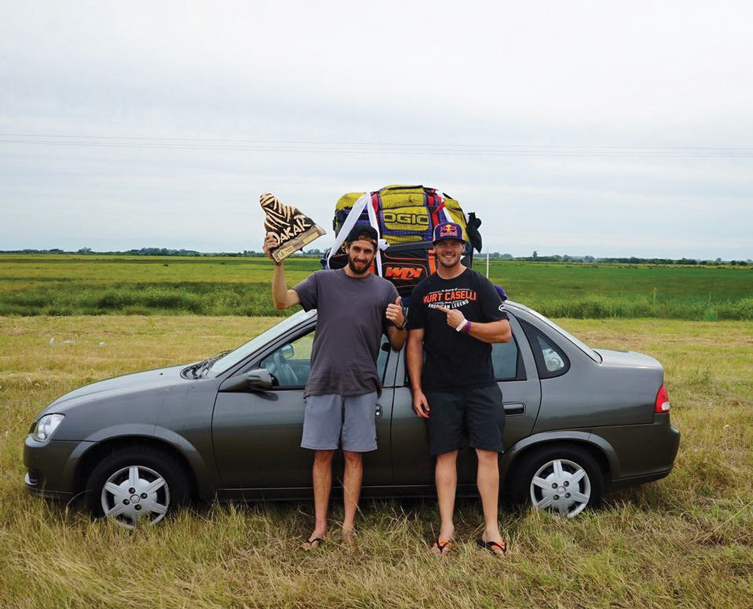
TM: Can you put into words what the Dakar win means to you yet?
TP: Here we are a month from the Dakar, and I’m not sure it has fully sunk in yet. I just know that it’s something very special. I suppose the thing I’m proudest of is that I’m the first Australian to ever win the race. I may never win another Dakar, but no one will ever be able to take away from me the fact I was the first Aussie to win the race. I’d also like to think it can help open some doors for Australia – so we can get more Aussies over to South America to experience this incredible event.
With Frenchman Cyril Despres and Spaniard Marc Coma winning the past 10 Dakars, you’re the first Bike winner in a decade we haven’t had to listen to via a translator.
I’m sure that’s a nice thing for the English-speaking world, and maybe that’s got something to do with people saying to me that they felt they were part of my Dakar journey. But at the same time, I’m sure my brand of Australian English has got a lot of Europeans confused [laughs]. Some say I speak too fast and they can’t process what I’m saying or that they’re lost on my Aussie slang. Maybe they’re going to need a translator [laughs]. Seriously though, I’ve definitely got some more fans overseas these days, which is a good thing.
Shortly after the win, you said that the Dakar win was “a dream come true”. But in many people’s eyes, your desert racing aspirations have been relatively short-lived.
Yeah, I can understand that. People know that I was a decent motocross racer who got into the off-road and desert racing scenes only five or six years ago. I wouldn’t say that a Dakar Rally win has been my dream forever. As a kid, I really wanted to be a road bike racer and follow in Mick Doohan’s footsteps. But that goal came to end fairly quickly when I started growing and got … well, I won’t say fat; but let’s just say that I was no pint-sized jockey by my mid-teens. My goal was then to race motocross and supercross in America. It was in about 2009 – when I switched to enduro and desert racing – that I started paying attention to Dakar. Then, when my teammate, Ben Grabham, went over and raced a couple of Dakars, I took even more of an interest. But at the same time, I came to realise how expensive it was to race Dakar. So when the opportunity came up in 2015, I grabbed it with both hands and made the best of it with a podium. A year later, I shocked myself by winning the thing.
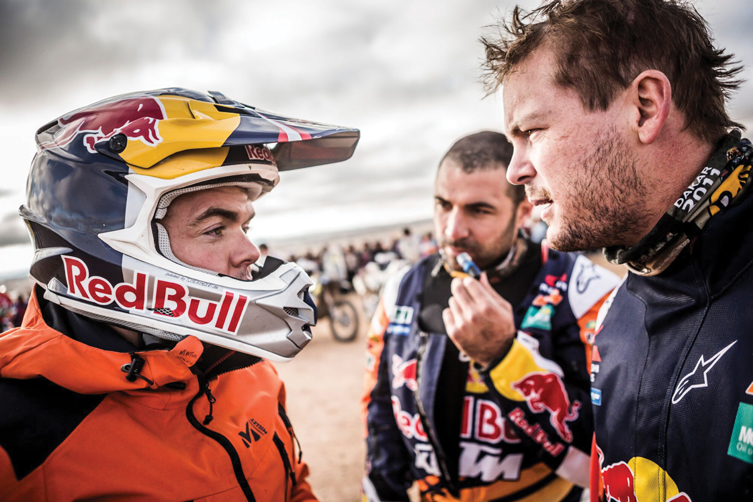
After winning your fourth Outright AORC title last year, did turning your back on the domestic series for a full-time tilt at the FIM Cross-Country Rally scene feel like a leap of faith?
Absolutely, it did. I felt very sentimental about leaving the AORC behind, and the decision was especially difficult because I knew how unpredictable rally racing is. There are so many elements that determine your success or failure in the sport. It was also a tough decision to make myself unavailable for Australia’s ISDE team, and I know a lot of people were disappointed in me for that. Sitting at home as the boys were killing it at the Slovakian ISDE really made me doubt my decision to focus on the Dakar. Thankfully, I now know it was the biggest and best move I’ve ever made, and it was great to see that Australia was awarded the ISDE win, proving the boys can get the job done without me.
You’re the only Aussie who’s raced the Dakar without first having a crack at the Australasian Safari. Why is that?
Just as I was getting interested in desert racing, KTM Australia began to invest less in the Safari. Also, the Safari and Dakar are more different than you’d think. The Safari is much more high-speed charging, whereas the Dakar has a greater focus on navigation and uses a completely different roadbook. Initially, I thought I was no chance at rally racing because the roadbook is in French, and yet I can barely speak English [laughs]. It was actually easier for me to focus on learning the Dakar roadbook.
You obviously picked up the art of rally racing very quickly, but what mindset do you need to take into the Dakar?
Focus is a very important aspect of it. Cluttering your mind with irrelevant concerns is tiring and takes your mind off the job. And that’s when you make navigational errors or crash the bike. I think the way we approached the Dakar as a team in the first week was key. We remained relaxed and calm and treated it as the marathon it is. You’ve got to look after yourself and the bike. You need to make sure you’re well hydrated and full of food to keep your energy levels up. You’ve got to identify stages that you think you may be strong and capitalise on that, and minimise your losses on other stages. Backing it off a little on a day you’re not strong might cost you four or five minutes, but you can gain 10 minutes by going for it on a day you’re strong. You never have 14 lucky days at Dakar. You have to put the work in, take your time and be smart, smooth and consistent. That said, I could go back to Dakar for another 10 years and never win again. There are just so many variables. I was just fortunate that I made my mistakes in the rallies leading up to Dakar, and then minimised them at the Dakar itself.
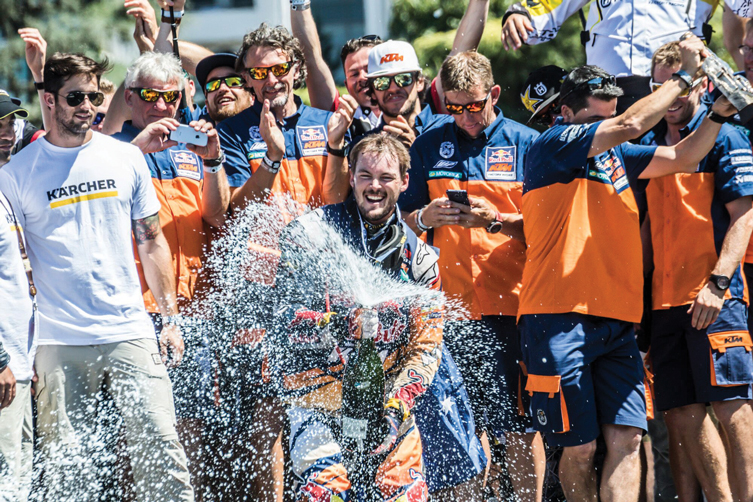
Your former teammate and team manager, Ben Grabham, says he’s never seen any rider who’s able to adapt to terrain the way you can. No doubt that’s a huge advantage at Dakar.
It is an advantage. And racing the Finke [Desert Race] over the past five years has played a big part in that process. A lot of people say they’re shocked at how fast I am in the desert after what they see as relatively little experience. But they forget that I grew up on a 43,000-acre property in the middle of nowhere. Most of my tracks were five or 10 minutes from the house, so I’d just hold the throttle to the stops until I got there and then cut my laps. That got me used to going fast in the desert at a young age. And then I guess the combination of my motocross and enduro racing have helped make me a more versatile rider. Grabbo has been a huge help and influence for me, too. His experience and his ability with bike set-up for the desert is second to none, and he passed on everything he learned at Dakar before I raced my first rally. I’ve always loved going flat-out, and I’ve always been comfortable racing at high speeds. So then it’s simply a matter of being able to navigate accurately at the same time. At this year’s Dakar, I think there were certain days where I was still in my comfort zone at those high speeds, whereas other guys weren’t. It was those stages that shattered a few of my rivals’ confidence. I fed off that; it helped me get to the finish line.
You’ve said the Dakar is two weeks of torture, but you seemed to enjoy yourself more this year.
When I was younger, I tended to take things a bit too seriously, and that’s when things go wrong for me. So I approach Dakar as if I’m back home in Australia, riding with mates and having fun. The more fun I’m having – on and off the bike – the more my mindset is suited to racing. Each night, after I’d prepared my roadbook, I’d come out and stir the boys on the team up. I’d be hiding their tools and telling jokes. I suppose that was my way of keeping everything in perspective. Having a laugh and not over-thinking things is important at a race like the Dakar Rally.
According to your manager, Matty Macalpine, everyone on your team was astounded that your temperament didn’t change throughout the Dakar, irrespective of whether you’d had a good or bad day on the bike.
The guys on the team seem to like the light-hearted Aussie approach to things. The more laid-back and easygoing, the more those guys enjoyed themselves. When I’d come in at the end of the day and they’d ask me how everything was, I’d just say, ‘Yeah, I was just cruising along out there, having fun. You blokes have a good day?’ Then they’d watch the vision of the race and say, “What do you mean you’re cruising?!” You’ve got to put your bad days behind you. If you stress too much about the past, you’re just burning energy unnecessarily and you lose focus on what you can do the following day. And if you have a good day, there’s no point coming in and being cocky about it, because a small mistake the next day could hand all that time back. I should make the point that it cuts both ways with my KTM team. They gave me the same cheer on the days I ran 40th as the days I won. It’s an awesome team environment.
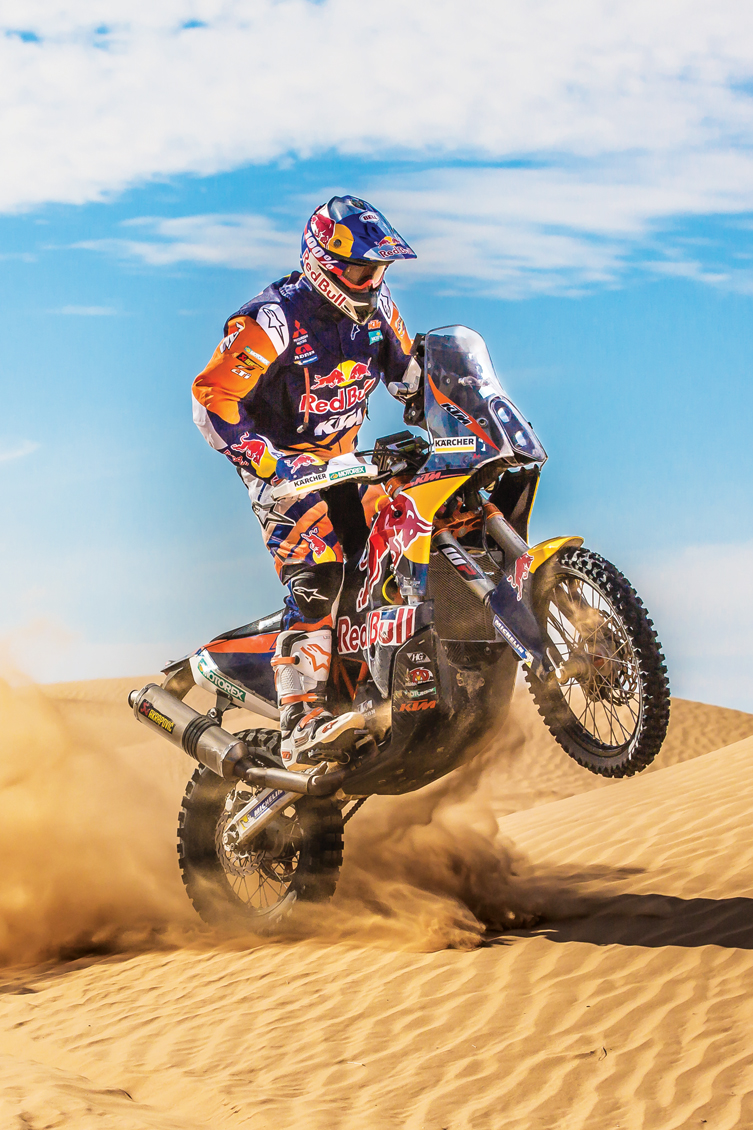
And by being gentle on the bike, you made the team’s life a lot lessnstressful, right?
Yep, they love the fact I’m so easy on the bike. At this year’s Dakar, we did 9300km and only changed one clutch in the bike. With Marc Coma, they’d change a clutch every day. These new KTM 450s are so incredibly reliable, it’s insane. For the past two or three years, the KTMs are good to go the entire Dakar on one engine. When you consider the extremes of temperature and altitude, that’s really saying something. The race is now so competitive, you just can’t afford the 15-minute penalty for changing an engine. Being gentle on the bike is key to being a good rally racer, and I’m lucky that comes naturally to me. The payoff is that the bike’s still strong in the second week of racing. Coming into the Dakar, who did you consider your biggest threats? I think that if you start to focus on your competitors, you lose focus on the race. At Dakar, it’s rarely the fastest guy who wins; it’s often the smartest guy who wins. I should be careful in saying that because I’m not the sharpest tool in the shed [laughs]. What I mean is that, more than in any other race, your temperament and your approach at Dakar are just as important as your speed. The 2016 Dakar was the sixth rally race I’ve ever competed in, so a lot of people wonder where the hell I came from. There are top guys who’ve been going to Dakar for 10 years and never finished on the podium, or who’ve finished on the podium and never won it. Sam Sunderland hasn’t finished a Dakar in five attempts, and Joan Barreda has raced seven consecutive Dakars and never finished the race. So I can imagine that I’m not on Barreda’s Christmas list.
How are the dynamics between you and the other top riders now?
It was interesting that, when I went to speak to many of the guys I was racing against this year, they didn’t say much back to me. Maybe they’d had a shit day. Maybe they were trying to psych me out. Whatever the case, they seemed to be taking everything more seriously than me – stressing about things a lot of the time – and maybe that’s what cost them. It’s no skin off my nose when other riders don’t talk to me. I’d just brush it off and get on with things. But from now on, though, I won’t be able to play the dumb card.
You’ve just handed KTM their 15th consecutive Dakar win – which must really be starting to grate on Honda. Is the Honda versus KTM rivalry tangible in the Dakar pits?
Oh, yeah. Absolutely. Honda’s come to Dakar with a big-budget HRC team for four or five years now, so they’re not enjoying the fact the KTM keeps racking up wins. Look, a win is going to come for Honda sooner or later. And honestly, as much as KTM don’t want their win streak to be broken, they’re smart enough to know that a Honda win at Dakar would bring more hype to the race and the sport. If KTM end up with 20 straight wins, chances are that Honda might pack up and go home. And that’s not good for anyone. That said, none of us at KTM plan on making it easy for Honda.

From the outside, it appears as if there’s more intensity and pressure to succeed in the Honda camp.
A lot of people look at KTM and say there’s so much pressure to keep the win-streak alive. But KTM has shown for 15 years that they’ve got reliable bikes and a team structure that can win the Dakar. I think the pressure is all on Honda and other teams, who are all striving to win the race for the first time in the modern era. You could see that pressure on the Honda riders’ faces this year, and I’m not sure it was a positive influence on them.
What did Marc Coma – five-time Dakar winner and now Dakar’s Race Director – say to you after the win?
I’ll always remember that Marc came up to me after last year’s podium and told me that I had a big future in rally racing. This year, Marc had to be diplomatic – because he’s with the event organiser now, not KTM – but he told me how special it was to win in just my second Dakar. He told me that he’d followed me in the helicopter some days and seen how smooth and in control I was. That was nice to hear from such a legend of the sport.
What’s the biggest difference between last year’s supported Dakar ride and this year’s full factory-backed campaign?
The bike. I’m still dealing with many of the same guys on the KTM team, but my bike this year was so good, it allowed me to get onto that top step. Plus my mechanic, Joe – who worked with Coma for the past five or six years – did a brilliant job with the bike. Having the bike perfect every time I threw a leg over it helped give me the confidence to go out there and ride it hard.
What doesn’t the average person realise about the Dakar Rally? The sleep deprivation, the assault on the senses, the danger…
People watch the highlights package on TV each night, and say it doesn’t look that hard. But what they see on TV is only a small portion of it – usually only the bits with nice scenery. What the TV doesn’t show is the other 400km of track you race, or the 300km of transport section you’ve got to ride to get there. Nobody realises that we only run on about four hours of sleep per night. You do that for two weeks straight and try to ride a motorcycle for the whole day. Add to that the fact we ride up at 4500 metres of altitude – where you’re struggling to breathe and the bike is struggling to pull fourth, fifth and sixth gear – and experience massive temperature extremes (from minus 4 degrees to 4 degrees, which feels like 60 degrees in the sand dunes!), and you start to get a feel for how draining on the body and bike this race is. Half the time, you’re body is in shock, wondering what the hell is going on.
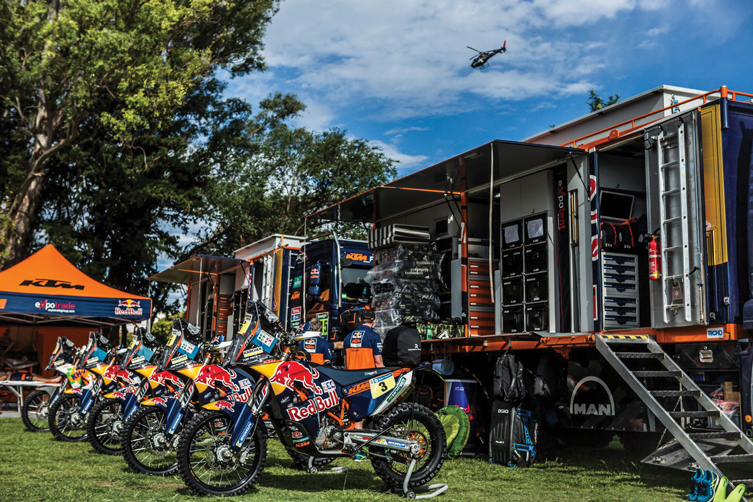
Give us a feel for the average day at Dakar.
We’re up at 2 or 3 o’clock every morning to get on the bike and start riding. After the day’s stage, we’ll get into the bivouac at 3, 4 or 5 o’clock in the afternoon. I’ll then spend half an hour talking to the team guys. After that, I’ll head into the camper and eat some food and then sit down to prepare my roadbook for the following day. Depending on the size and navigational complexity of the day, that can take anywhere from two to four hours. Then at 8 o’clock, there’s a briefing about the next day. After that, I’ll try to get some more food into me before spending about an hour getting my gear ready for the next day – to make sure my jacket, goggles and gloves suit the likely temperature and conditions. So you don’t get to bed until 10 or 11 o’clock at night. Then if you’re lucky, you don’t have a team next door who’re on the hammers and grinders all night to beat their cars or trucks back into shape. The Dakar is a race designed to break man and machine, and the French organisers make no apologies for that.
What about the maniacal riders in the Malle Moto class, who do it all with no support?
Those guys are absolute animals; the ultimate hard-man route to a Dakar finish. The only outside assistance they get is one metal toolbox that organisers ensure is waiting for them at each bivouac. Every day for 14 days straight, they’ve got to do all the work on their bikes, and then set their tent up to sleep in. So you could imagine they’d get way less sleep than me. I honestly don’t know how they do it. Those guys are the true heroes of the Dakar and I think they should get more recognition.
In the first week, you said on the TV coverage that you’d had a run-in with a cow, but it turned out that cow was actually a car. How close did that collision come to derailing your race?
The Dakar is a dangerous race without having cars on the track, so I blamed the cow initially because I didn’t want it to reflect badly on the organisers, who do a great job in what’s often remote and testing environments. Yeah, I hit a spectator’s car that had got bogged on the track. I was just really lucky that it didn’t cause any damage to me or the bike.
Compared to the ‘yeah, nah’ responses you were notorious for a few years ago, your act in public is now much more polished. Have you done any media training?
Mate, I’ve done zero media training. A lot of people have told me that I come across well now on TV, so I guess I’ve just gotten a bit better at it with all the practise. I think it’s important to be yourself and not too polished. I tell it how it is, rather than some scripted response, and people seem to appreciate that.
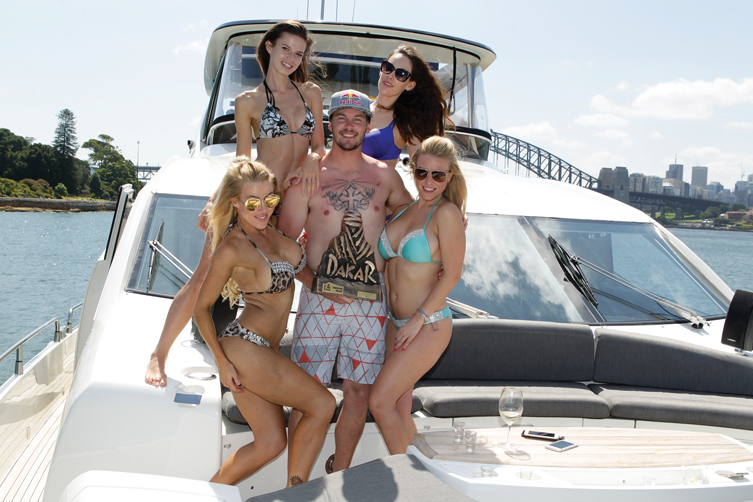
When you win such a prestigious race, you can expect a media onslaught. Were your media commitments more gruelling than the Dakar itself?
If it’s not football, cricket or tennis, it’s damn hard to get the mainstream media’s attention, so you’ve got to grab the exposure while you can. After I got the podium result last year at my first Dakar, the media got to know who I was and started to take an interest. And then with this year’s race, they all got on board big-time. It’s definitely been overwhelming, particularly because it came at a time when I was so dog-tired and still trying to process what the achievement meant to me. As much as it was good for my profile, I also see the coverage as an opportunity to build the sport up in the Australia and help more people benefit from it. A lot of people said to me that once you win Dakar, you basically start another Dakar again with all the media and sponsor commitments. And I can now see what they meant. It honestly felt like that, but in a good way obviously. I haven’t been able to come home to see friends and family and relax as much as I would have liked. But it’s a good problem to have and it won’t last forever.
A reliable source told us that your Channel 9 Today Show appearance came after a big night on the town and just an hour’s sleep. True?
My whole program was pretty strict for the three months leading up to the race. But, yeah, a few of us went out celebrating the night before that Today Show interview and I was running on very little sleep in the Channel 9 studio. I take my racing seriously, but I also like to enjoy myself when I catch up with friends I haven’t seen for a while. Maybe Dakar helped prepare me for sleep-deprived experiences like that, eh [laughs].
Of all the exposure you received after the win, how cool was the image of Roger De Coster and the KTM team holding up a pitboard with “Toby’s THE MAN” written on it?
That was as cool as it gets. It’s amazing to know that those legends of the sport are following the Dakar and interested in how I went. The week after Dakar, I headed over to the USA and spent some great time with Roger, Ryan Dungey and the rest of the KTM team. They were stoked that I took the trouble to cart the Dakar trophy over there with me. I caught up with Red Bull and some other sponsors while I was in the States, too.
If Ryan Dungey wins an AMA SX title, he’ll earn a million-dollar bonus from KTM, plus a bunch of other contingency payouts. So what’s a Dakar win worth to you?
It’s definitely better than what I’d been earning in Australia. I’m not going to put a figure on it, but I didn’t make a million bucks. For the guys at KTM, the Dakar result is what they really care about because winning one stage at the Dakar brings more recognition than winning the FIM Cross-Country Rally World Championship after a full season of racing. The KTM guys actually say a Dakar win is comparable with an AMA Supercross title win. So it’s a little weird for me to hear that on one hand, and yet not receive a comparable reward. Don’t get me wrong; KTM pays me really well for it, and the money I got for the win has definitely made my life a little easier. I hope the benefits will flow for the following Dakars I race … and hopefully win. I mean, money’s important and it pays the bills, but if you focus too much on money and don’t enjoy your racing, you’ve lost the plot. If you’re not having fun, no amount of money can make up for it.
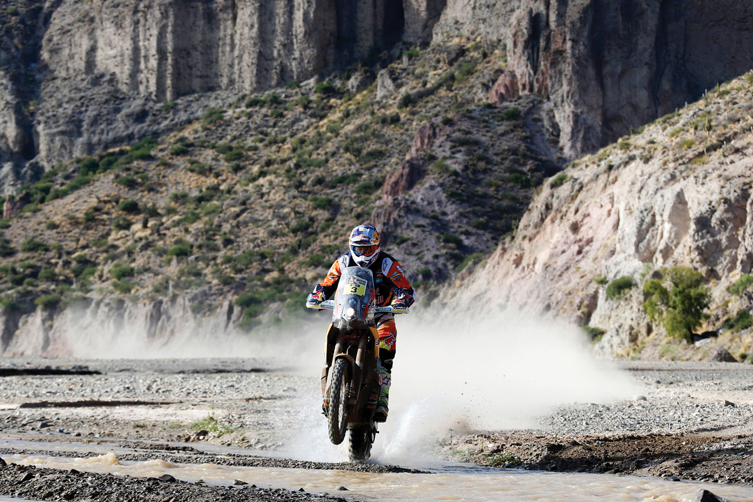
After your spinal injury and operation in 2013, you joke about your head now being screwed on. But how big a part did that experience play in shaping your temperament for the Dakar?
I’d never wish that injury upon anybody, but I think it played a huge role in making me a better rally racer. It gave me the chance to sit back and reflect on how much I love the sport, and appreciate that there are other important things in life. I think that injury made me a much more calculated rider. I’m not scared to hold the throttle on, but I’m more aware of the risks nowadays.
You don’t talk about it much, but I get the sense that your good mate, the late Kurt Caselli, also played a key role in your Dakar success.
Kurt was the kind of guy who made you want to be a better person. He made everyone around him feel better about themselves. I took some of that attitude on board. I enjoy every day I’m riding a bike, but it’s more important to me now that the people around me are having a good time, too. Honestly, I probably wouldn’t be doing the Dakar if it wasn’t for Kurt. Alex Doringer, the boss of the KTM rally team, told me that every time he spoke with Kurt, Kurt would either start or finish the conversation by talking me up. So Kurt definitely opened a lot of doors for me. I was riding with Kurt just two days before he died and, still to this day, it’s very hard to take. Kurt won a stage in his maiden Dakar, and he was definitely on my mind on every Dakar stage I’ve ever ridden. A few times this year, it was spooky because I’d be riding along and look down at my instruments and see that I was at kilometre 66, which was Kurt’s race number. It was a reminder for me that we’re here to have fun. I like to think he’d be proud of what I’ve achieved, and I wish he was still around so I could thank him for the part he played in it.
You’ve just got back from a whirlwind trip to the KTM factory in Austria with KTM Australia’s Jeff Leisk and Bronte Howson. How was that?
It was my first time to the factory and a great trip. There was lots of celebrating and the boys certainly put me through my paces. And some champagne! It was like a Dakar marathon stage all over again, but great to celebrate with the two guys who’ve been such a big part of my racing. At the KTM factory, they put on a huge lunch party for me. It was a bit of a surprise thing, and when I walked through the doors, the whole place just erupted. It was great to meet all the people behind KTM. Seeing how hard-working and passionate they make me even more determined to do well. It reinforced to me what a team effort this rally racing really is, and what an amazing company KTM is to be a part of. They want to win races, but at the end of the day, they’re a big family who all love what they do.
What’s the future hold for you … aside from a few more beers on the boat this arvo, that is?
The hard yakka is only going to get harder from here as we’ll have more of a target on our backs now. I’m looking forward to getting stuck into the World Cross-Country Rally Championship and preparing ourselves for the 2017 Dakar. I feel like I’ve got a few more Dakar wins in me. Plus I’m helping promote the endurocross race that’ll be held in conjunction with the Clipsal 500 in early March as I see that as a great opportunity to bring enduro racing out of the bush and showcase the sport to big crowds. I’d love to be able to get back to Australia in the middle of the year to do the Finke and Hattah Desert Races. But we’ll have to see how things are travelling with rally, which’ll be my primary focus this year.
Thanks, mate. Time for a swim?
You bet it is, Wigan!
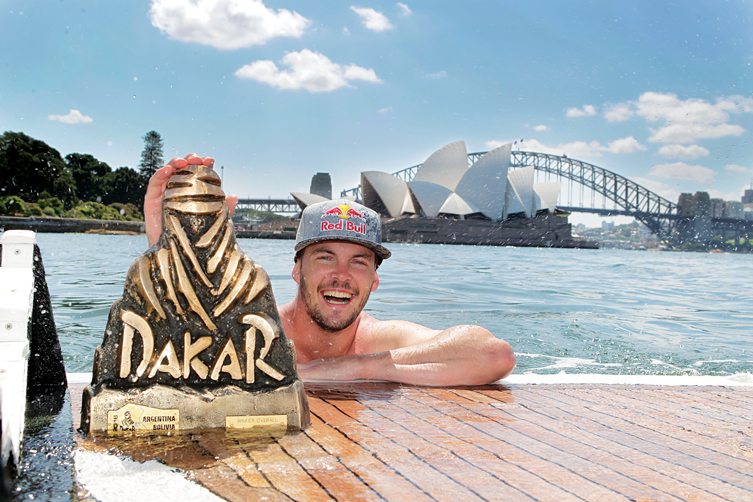
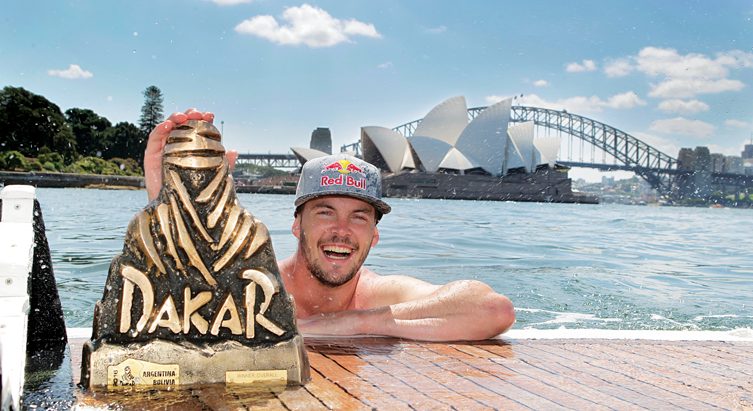


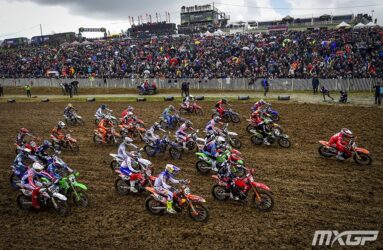
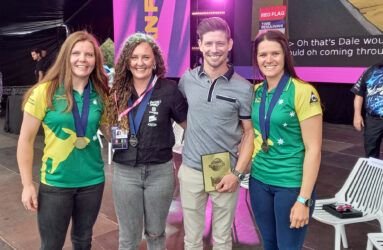
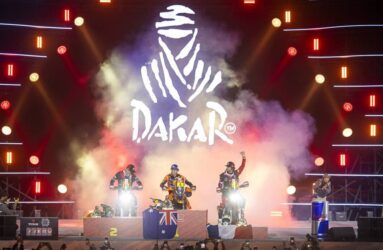
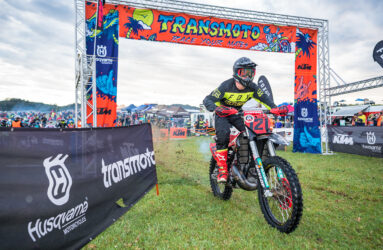

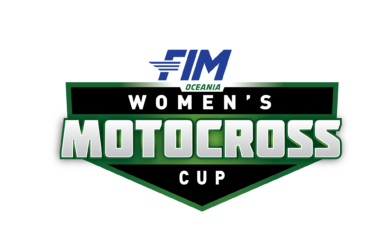
Be the first to comment...